When you click Create to create a new template or when you select an existing template, the Template Editor opens:
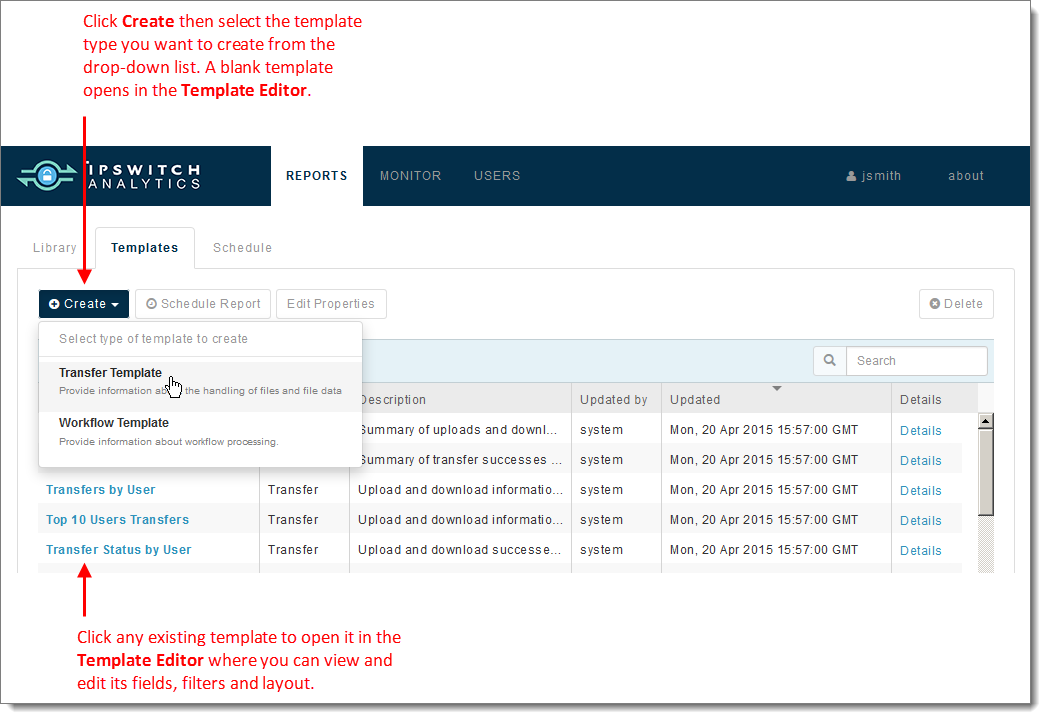
Tip: Users with sufficient privileges can also open the Template Editor from the Library by clicking Analyze Report.
The Template Editor is where you will add fields to the template, decide the ordering of the field columns, and optionally add a filter to limit the MOVEit sources that will contribute data to the eventual report. You can also run the template to produce a report that contains actual MOVEit data, and then save the report to the Library or save it as a PDF or CSV file.
When the Template Editor opens, you see:

The template name displays at the top of the canvas. Only one template can display in the Template Editor at a time.
ADD FIELDS TO A TEMPLATE
A field contains data captured from your MOVEit server(s). The Fields palette contains fields associated with the template type you selected, organized by field type. Click a field type to show or hide the fields beneath it. For a complete list of all fields and their definitions, see Field Definitions.
Click a field to see a description of the type of data the field will display in the report.
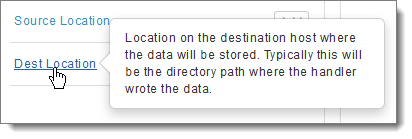
When creating a NEW template, you can opt to display summary or detailed fields in the palette. A field can contain either Detailed information about a single transfer, process, or action, or Summary information about multiple transfers, processes, or actions that have been aggregated for higher-level analysis. The Field palette can display only one of these field output types at a time; Summary fields display in the palette by default. Use the Report Output selector to change the type of fields that display in the palette:
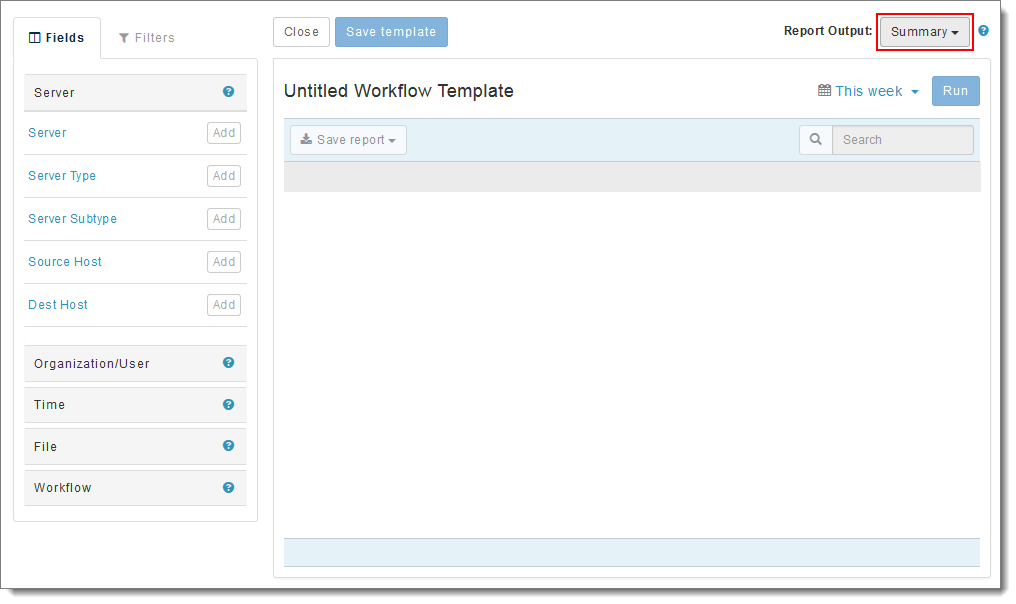
Note: Many fields will display when you select both Summary and Detailed. Only those fields that are specifically Summary vs Detailed will be affected by the Report Output selector.
Warning: You will lose all fields that you have already added to the template if you change the Report Output.
Tip: Summary fields reduce the number of rows in the report, which is useful if you want to reduce report results to a manageable length.
To add a field to the template, click Add inside the palette. You can add up to 15 fields per template.

To remove a field, click Remove next to the field in the palette, or click the X next to the field's heading in the canvas:

To reorder the field columns in the template, click on a field and drag it to a new position.
FILTER A TEMPLATE
To include data only from specific MOVEit servers, organizations or usernames, click the Filters tab.

The Filter drop-down menu lets you select the type of MOVEit source you want to view: Servers, Organizations or Usernames. The source list below it updates to reflect your selection.
For example, if you select Filter Usernames, the source list displays all usernames from All Organization(s) across your MOVEit system. The total count of items in the source list displays next to the selected MOVEit source type. In the example below, 18 usernames display in the list.
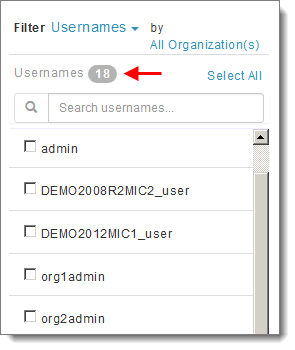
Note: Servers is the default Filter type initially; all MOVEit servers to which you have access will display in the source list initially.
Use the Search box to locate a specific server, organization or username in the source list when it contains a large number of items (the asterisk wildcard is accepted). Enter any portion of the name to view all results that contain that string.
To display only usernames from specific organizations, click All Organization(s), select the organizations to include and click Ok. Optionally click inside the Search organizations... box to enter an alphanumeric string to search for an organization.
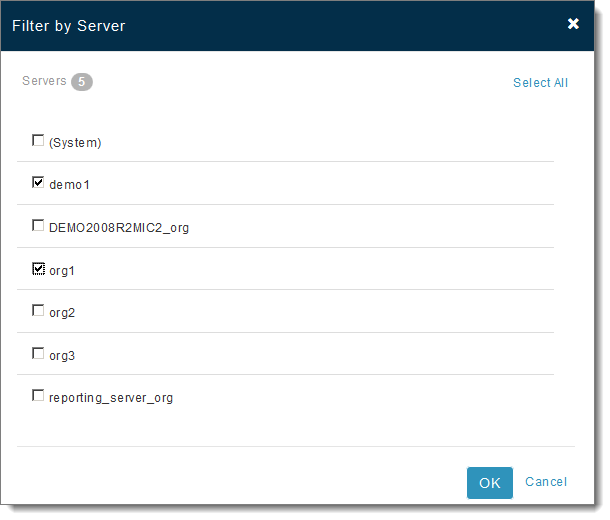
In this example, notice that only two organizations are selected. The source list of usernames now contains only 13 items from 2 Organization(s).
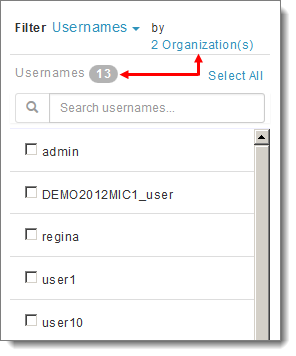
Similarly, if you selected Organizations for the Filter type, the source list will display all organizations from All Server(s) across your MOVEit system. To display only organizations that belong to specific servers, click All Server(s), select the servers to include and click Ok.
Remember, MOVEit sources are nested: a server contains organizations that contain usernames:

You can filter only one level above the current filter type. You cannot, for example, show in the source list only Usernames from specific Servers.
Once you've customized the source list to your satisfaction, select individual source items to include in the template. Remember, only data for these MOVEit sources will be included in any report generated from this template.
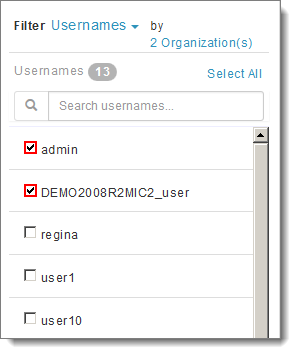
Click Select All to select all items in the list, or Deselect All to deselect all items. Selecting no items is the same as selecting all items in the list. If you select less than all items, only the items you select will be included in the template and any items not explicitly selected will be denied.
SAVE AND CLOSE A TEMPLATE
Once you've added at least one field to the template, you can click Save to save the template with a Name and Description. Select Publish to all users to let all other users who have access to Templates view your custom template.
 You can also Close to exit without saving at any time.
You can also Close to exit without saving at any time.
RUN A TEMPLATE
At any point, you can click select a time range and click Run to populate the template with actual MOVEit data. First select a time range from the drop-down options in the upper right corner:
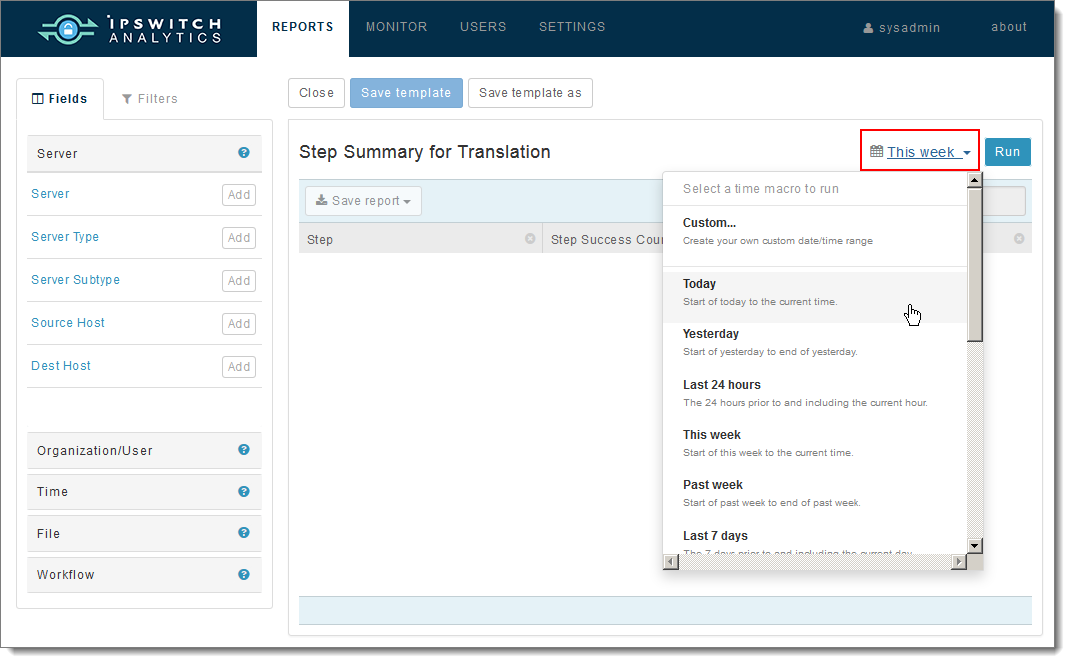
Next click Run to populate the template fields with data from the MOVEit source(s) you selected in the Filter.
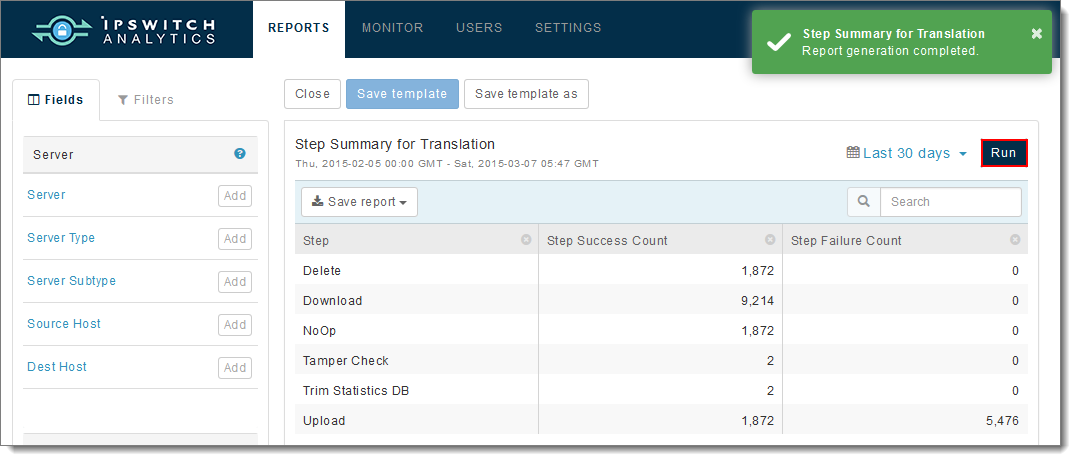
Note: A template must contain at least one field before you can run it.
Tip: To avoid lengthy report processing times, narrow the filters. For example, select only two servers instead of all servers, or select specific users instead of all users.
If the template filters by MOVEit source, a blue filter icon displays at the bottom left of the report. Click on the icon to see the filter settings.
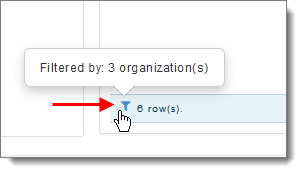
Click any column heading in the report to sort data in ascending or descending order (arrows indicate sort direction).
SAVE A REPORT
Once the template populates with data, it becomes a report that you can then save to the Library, or export. Click Save report to save this report to the Library or download it as a PDF or CSV file.
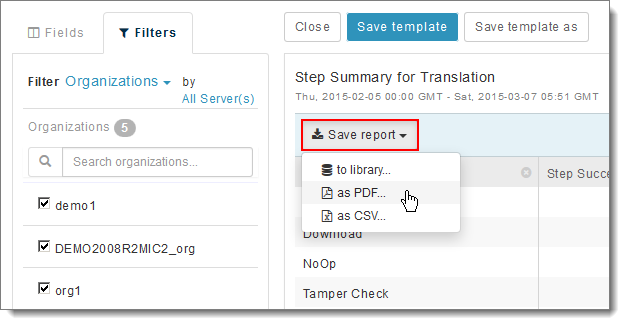
Note: Saved templates and reports do not retain sort order.
Note: You cannot save a time range with a template definition.
The following topics describe how to work with templates in greater detail:
Create a Template
Publish a Custom Template
Edit a Custom Template's Name or Description
Edit a Template's Fields and Filters
Create a Report On Demand
Delete a Template